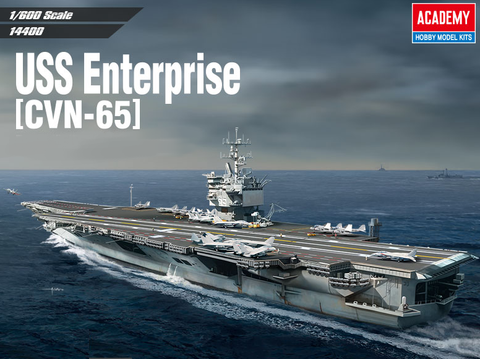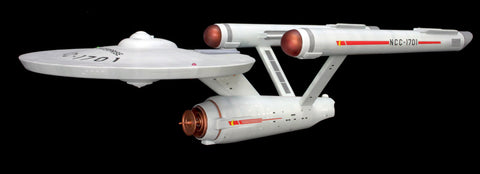
Heller Ships 1/600 Queen Mary II Transatlantic Ocean Liner w/Paint & Glue Kit
Accepting Back Orders - Will Ship When Available
HLR-52902In May 1998, the managers of the company Carnival Cruises –the first cruising company in the world- asked the naval architect, Stephen Payne, to design a giant-size transatlantic, equipped with entirely new facilities, in order to take the place of the famous Queen Elizabeth 2, within the fleet of their subsidiary company, Cunard. Stephen Payne, who has a passion for the great liners of the 30's, very quickly defined the outline of this exceptional ship which would become the biggest liner in the world, measuring 345 metres long, 41 metres wide and 72 metres high (the equivalent of a 23 story building). The architect brought into light the best aspects of the past and conveyed them into the present: the breakwater of the forecastle is based on the very elegant one designed on the Normandie. As for the facade, in the shape of stairs, it is very much inspired by the one found on board the Queen Mary 1. However, the “steps” have given way to a gentle slope. The Queen Mary was fitted out with open bridge ailerons: the idea has been taken up again but this time they are closed in order to brave the bad weather in the North Atlantic Ocean. The QM2 has borrowed from the Queen Elizabeth 2 the wheelhouse as well as the outline of the chimney. However, the latest Cunard ship is well and truly a 21st Century ship, harmonizing the advantages of a cruising ship as well as a transatlantic liner. At first sight, these two conceptions go against each other: a cruising ship opens out onto the sea, thus enabling the passengers to enjoy an unrestricted view. However, it is very badly equipped to brave a storm. On the other hand, a liner is designed to resist strong waves but is, de facto, very closed-in. Therefore the challenge was to make QM2 attractive for cruises. The passengers being very receptive to cabins with balconies, Stephen Payne designed many of them. However, to avoid the openings of some of the cabins to go under water should there be bad weather, he took special care to place them quite high. Consequently, the public premises on board Queen Mary 2 occupy unusually low decks on a liner; this is to provide a better stability - given the size of the large rooms one can find onboard- and sufficient free space higher up to fit out three decks with balconies made of corrugated iron. There, the cabins look out onto the sea but ore also protected by big openings fitted in the side of the hull. This layout reminds us of the Rotterdam, which belongs to Holland America Line (HAL), another subsidiary of Carnival. The rear of the QM2 has a rather peculiar shape: its round shape, designed to evoke the aspect of traditional ships, ends at the water line and tops a flat shape, characteristic of modern ships. This design, which has already been used for Eugenio C, is well adapted to "pod liners", QM2 being driven by four pods of 21 megawatts each. Advantage: the engines and the propeller shah are not inside the liner anymore. Therefore, the space gained enables to increase the number of cabins, thus the profitability on each voyage. The QM2's power is supplied by two diesel engines and a gas turbine, which produces a "booster" effect, thus a sudden and sharp acceleration whenever needed. The speed given, i.e. 29, 35 knots can actually reach 30 knots. But to whom entrust the building of a giant like the Queen Mary 2? In November 1999, Cunard allowed market forces to operate between several European shipyards. The Chantiers de l'Atlantique of Saint-Nazaire, who belong to the Alstom group, did all they could to carry off this amazing deal of nearly 800 million dollars. The entire research department set to work to draw up a very precise overall plan of the ship and to think up significant technical solutions, which would appeal to Cunard. By mid-March 2000, Cunard and Alstom Marine agreed: Queen Mary 2 would come into being at the very place where le Normandie and le France (now become Norway) were born. Three years of unremitting work -one of which being entirely given over to studies and to the engineers' deliberations -were necessary to achieve the biggest liner in the world, equipped with the most luxurious facilities ever seen! As soon as they embark, the cruise passengers are welcomed in the Grand Lobby, an atrium of about 15 metres high which leads up to four glass elevators: it’s on impressive sight! Everything here is colossal, like the project. In the restaurant Britannia, 1.347 guests can all enjoy a meal at the same time while watching the flurry of activity of the head waiters and waiters who tirelessly pace up and down the room - 41 metres wide and 9 metres high decorated with the biggest fresco ever contemplated by any sailor. On board, one can also find a planetarium in which 473 people can admire the fantastic sight of the sky recreated on a semi-spherical screen, 13 m in diameter and 8 m in depth. There is magic in the Royal Court theater. Before the eyes of the 1.094 spectators, the orchestra pit withdraws, the stage revolves and the steps -which are mobile- appear or disappear; everything bathing in light due to a bank of multi-colored spotlights. The stability, despite the swell, make the passengers completely forget that they are actually in the middle of the ocean. A library of 8.000 books, the largest ball room ever fitted out on a ship (lit up by two chandeliers weighing 200 kg each and the walls covered with a rosewood veneer from India), numerous restaurants (in some of them one can eat at all times) and even a thalasso therapy center give the final touch to this exceptional ship, the replacement of the Queen Elizabeth 2. However, this is nothing compared to the amazing luxury of the Forward Suites -located beneath the upper deck- with their own private elevator (to enable movie stars and key figures to walk around without being disturbed) and of the five duplex apartments which can be found at the stern of the liner. Two of these suites measure 209 m2 each! Furthermore, this huge space is adjustable: you only have to let the partitions slide! Aboard the QM2, the smallest cabin measures 18 m2, which is far superior to the size one can find on other ships.
Altogether, 2.620 passengers can embark and are waited on by 1.254 crew members which gives the QM2 the highest space/passenger ratio in the world. Following two widely publicized successive tests which were carried out off Belle-Ile (Brittany) and which were crowned with success, the ship was officially delivered to its owner by the Chantiers de l'Atlantique on 22nd December 2003. The Queen Mary 2 -officially named by Her Majesty The Queen- performed her maiden voyage on 12th January 2004 between her port of registry, Southampton, and Fort Lauderdale in Florida. She is commanded by Captain Ronald Warwick.
- Parts for 1 model
- Brush
- Paint
- Cement
- 1 decal sheet
- Skeins of cotton
- Instructions




